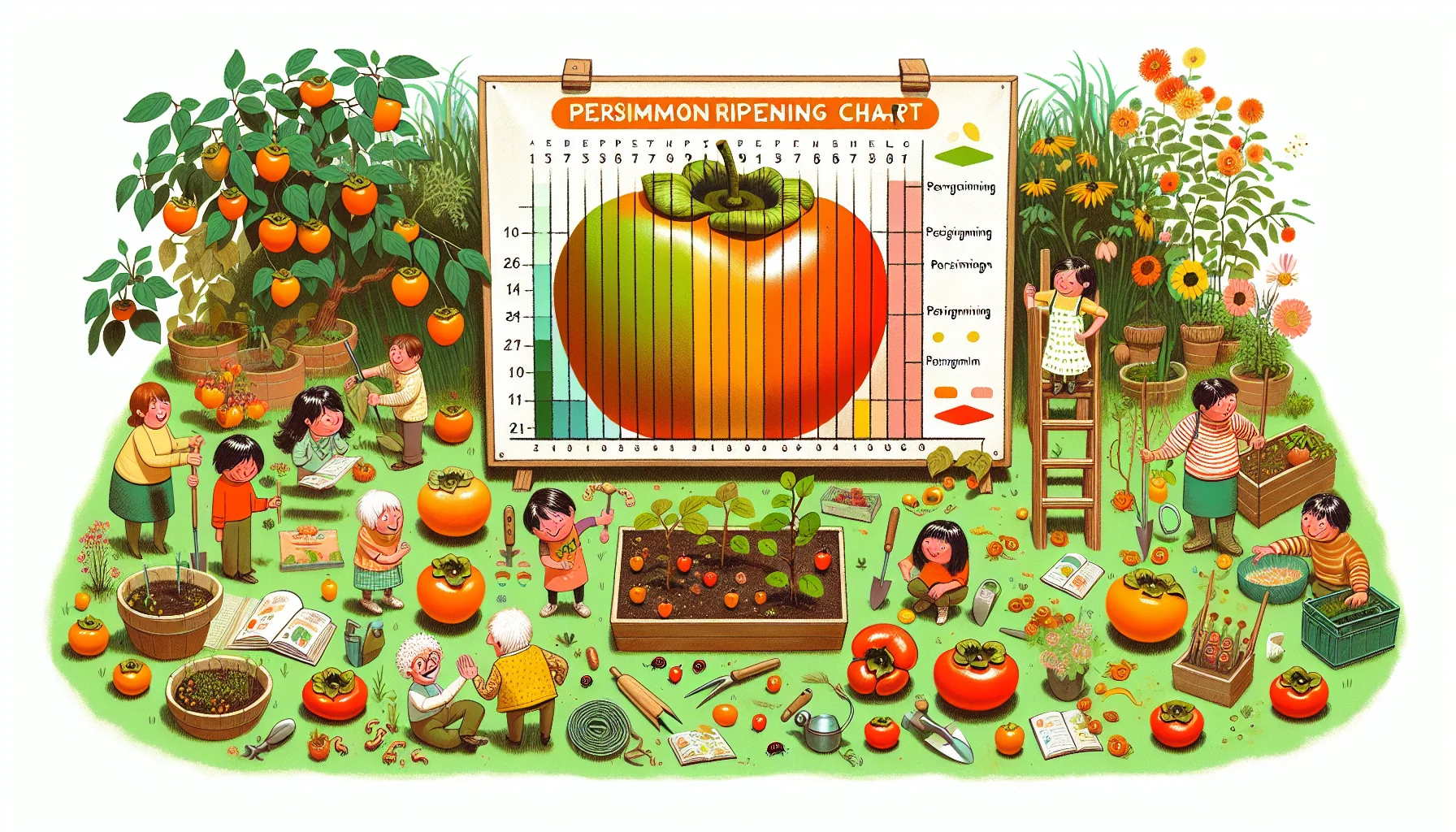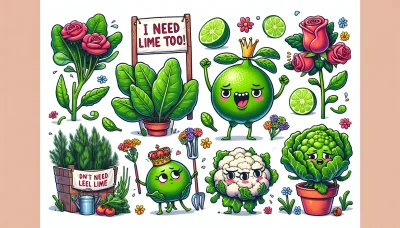Persimmon ripening chart Quiz
Test Your Knowledge
Question of
Understanding Persimmon Ripening: A Gardener's Guide
For gardeners, knowing the ripening stages of persimmons is crucial for several reasons. First, it enables the timely harvest of fruit at its peak flavor and nutritional value. Secondly, understanding these stages helps in planning the cultivation process more effectively, ensuring that the persimmons receive the right care at the right time. Lastly, it can aid in preventing waste, as properly timed harvests reduce the chances of fruit falling or spoiling before it can be enjoyed.
Types of Persimmons
- Fuyu: These persimmons are sweet and can be eaten while still somewhat firm. They have a squat shape and are often eaten like an apple.
- Hachiya: This type is larger and more acorn-shaped compared to Fuyu persimmons. Hachiyas are very astringent until fully ripe and soft, at which point they become sweet and can be used in baking.
The Persimmon Ripening Chart
| Month | Fuyu Ripening Time | Hachiya Ripening Time |
|---|---|---|
| January | ||
| February | ||
| March | ||
| April | ||
| May | ||
| June | ||
| July | ||
| August | ||
| September | Starts | Starts |
| October | Peak | Peak |
| November | Ends | Ends |
| December |
Factors Affecting Persimmon Ripening
The ripening process of persimmons is significantly influenced by several environmental factors, including temperature, sunlight, and watering practices. Temperature plays a crucial role, as warmer conditions tend to accelerate ripening, while cooler temperatures can slow it down. Sunlight is another vital factor; persimmons exposed to adequate sunlight ripen more uniformly and develop a sweeter taste. Moreover, consistent and appropriate watering practices are essential for the fruit's development and ripening. Over or under-watering can lead to issues such as fruit drop or delayed ripening. Understanding and managing these environmental factors can help in achieving perfectly ripened persimmons.
How to Harvest and Store Persimmons
Harvesting Persimmons
- Wait for the right time: Harvest persimmons after they've fully colored but before the first hard frost. For astringent varieties, this means when they're soft and ripe; for non-astringent, when they're firm.
- Check for ripeness: Gently press the fruit with your fingers. It should feel slightly soft for astringent types and firm for non-astringent types.
- Use pruning shears: Cut the fruit off the tree, leaving a small bit of the stem attached. Be careful not to pull or twist the persimmons, as this can damage the fruit and the tree.
- Harvest carefully: Place the persimmons gently in a basket or bucket to avoid bruising. Persimmons are delicate and can be damaged easily.
Storing Persimmons
- Sort the fruit: Separate the persimmons by ripeness. Store ripe and unripe fruits separately to prevent the ethylene gas produced by ripe fruits from ripening the others too quickly.
- Room temperature storage: Keep unripe persimmons at room temperature until they ripen. This can take a few days to a week.
- Refrigerate ripe persimmons: Once ripe, persimmons can be stored in the refrigerator to extend their freshness. Place them in the crisper drawer to avoid exposure to too much moisture.
- Use plastic bags for longer storage: If you want to keep ripe persimmons for more than a few days, place them in a plastic bag with a few holes punched in it for airflow. This can extend their life in the refrigerator by up to three weeks.
- Consider freezing for long-term storage: Persimmons can be frozen, either whole or sliced, for up to a year. However, their texture may change, making them best suited for cooked dishes or smoothies after thawing.
Common Challenges in Growing Persimmons
Growing persimmons can be a rewarding experience for any gardener, but it comes with its own set of challenges. One of the primary concerns is dealing with pests such as fruit flies, persimmon psyllids, and scale insects that can damage the fruit and foliage. Regular monitoring and the use of appropriate organic or chemical controls can help manage these pests effectively. Diseases like persimmon wilt and leaf spot can also affect the health of the trees. Ensuring good air circulation around the trees and practicing proper sanitation by removing fallen leaves and debris can help prevent these issues. Additionally, providing the right soil conditions and adequate water, especially in dry periods, is crucial for the health of persimmon trees. With careful attention and management, most challenges can be overcome, leading to a bountiful harvest of delicious persimmons.
Conclusion: Enjoying Your Home-Grown Persimmons
There's a unique joy and satisfaction that comes from watching the fruits of your labor literally come to fruition in your own backyard. Growing persimmons is a rewarding endeavor that not only beautifies your garden but also provides you with a delicious, sweet harvest. The anticipation of tasting your first home-grown persimmon of the season is incomparable. We encourage all gardeners to utilize the ripening chart as a guide to ensure the best possible harvest. Enjoy the fruits of your labor and the delightful experience of growing your very own persimmons.












